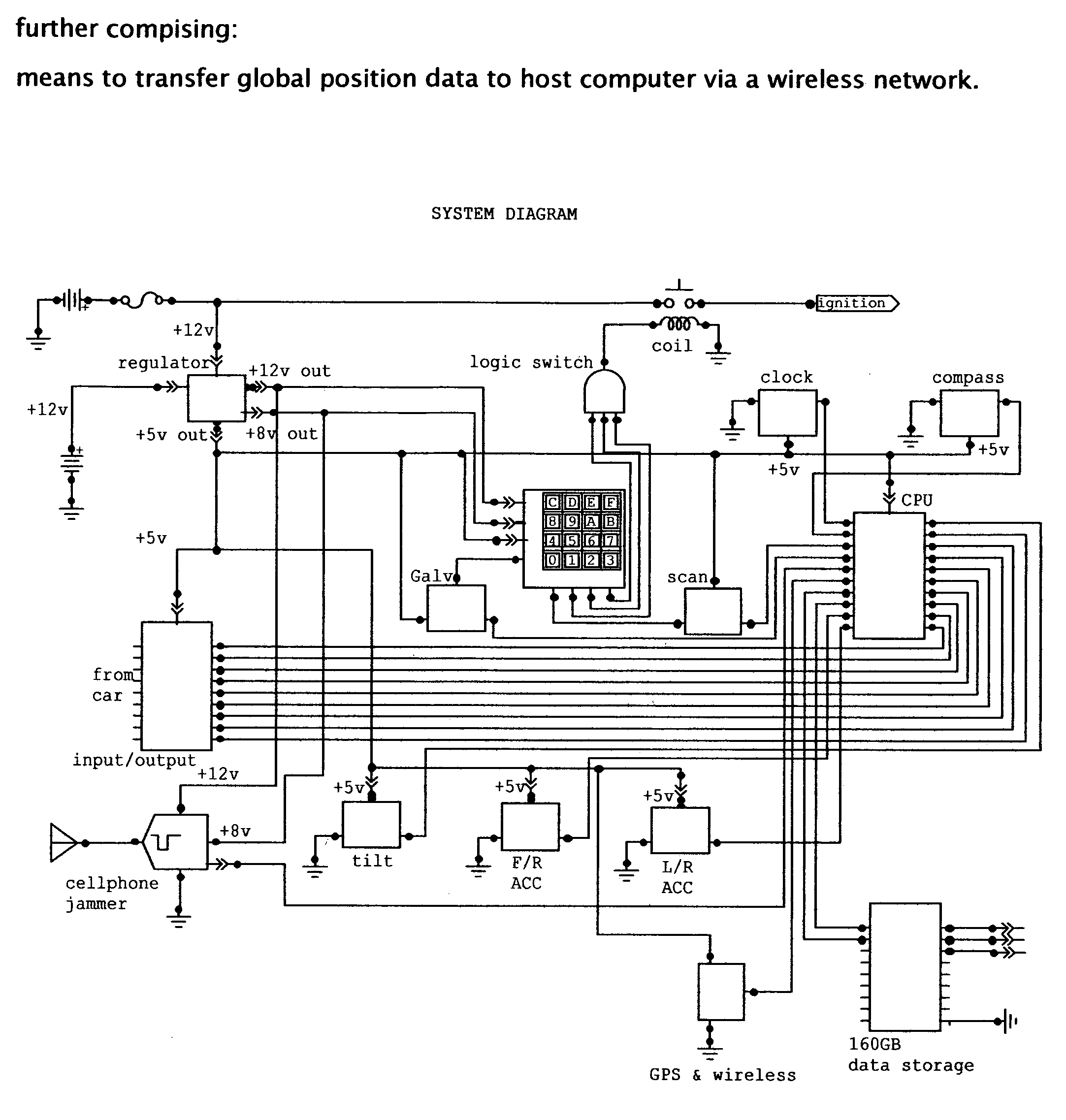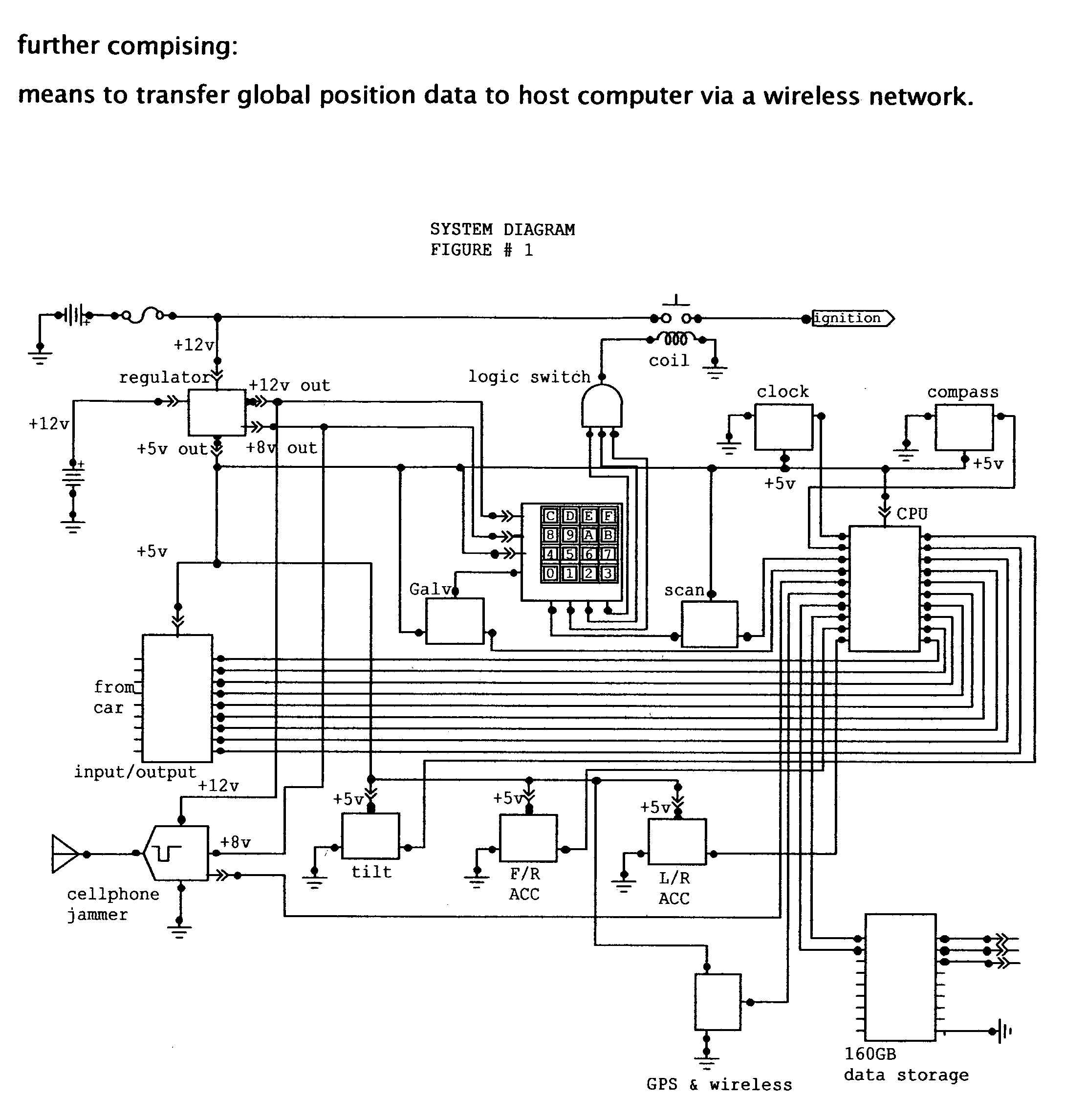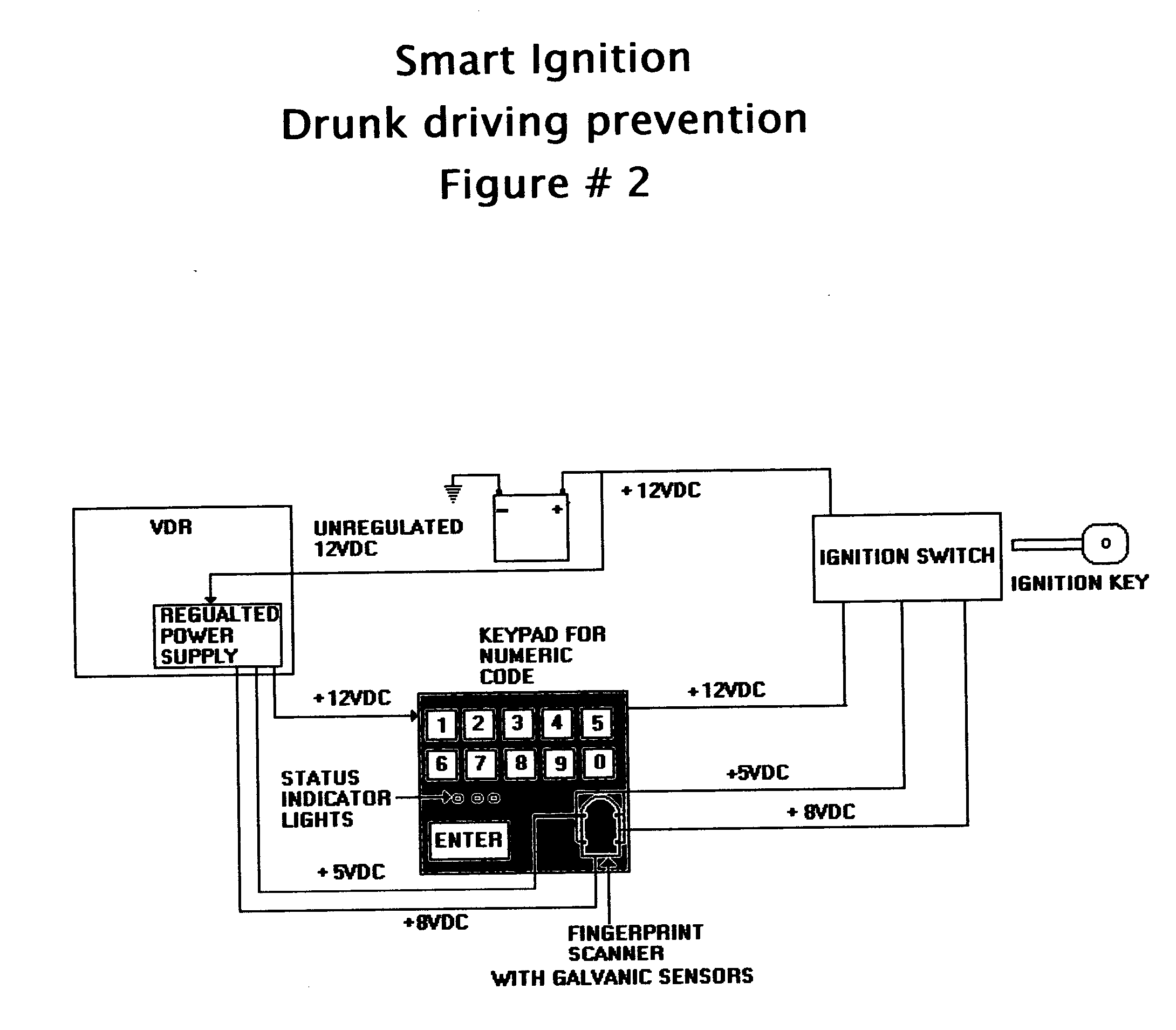Vehicle data recorder and telematic device
a technology of vehicle data and telematics, applied in the field of vehicle data recorders, can solve the problems of loss of 50,000 lives, over $150,000,000,000.00 in economic costs, and the data collection device used on these test vehicles is expensive, complex, and sophisticated. to achieve the effect of reducing drunk driving and automobile th
- Summary
- Abstract
- Description
- Claims
- Application Information
AI Technical Summary
Benefits of technology
Problems solved by technology
Method used
Image
Examples
Embodiment Construction
[0067]FIG. 1 is an overview of the entire system. The automotive battery provides 12 vdc to a three-output voltage regulator and to one side of a normally open switch. The voltage regulator outputs three separate regulated voltages, +5 vdc, +8 vdc, and +12 vdc. The +12 vdc constantly energizes the numeric keypad, which is used to enter the authorized drivers personal identification number. If a correct number is entered, a contact will close and place 12 vdc to one of three terminals on a 3-input switch (logic “and” gate). The driver would next have to place an identifying digit on a scanner for fingerprint identification and galvanic sensor readings for a time interval of 3 to 5 seconds. If a correct fingerprint is scanned, a contact will close and allow a +8 vdc to the second terminal of the 3-input gate. A clear reading (below the programmed legal limit for that area) from the galvanic sensor will allow +5 vdc to be placed on the final contact of the 3-input gate. When all three ...
PUM
 Login to View More
Login to View More Abstract
Description
Claims
Application Information
 Login to View More
Login to View More - R&D
- Intellectual Property
- Life Sciences
- Materials
- Tech Scout
- Unparalleled Data Quality
- Higher Quality Content
- 60% Fewer Hallucinations
Browse by: Latest US Patents, China's latest patents, Technical Efficacy Thesaurus, Application Domain, Technology Topic, Popular Technical Reports.
© 2025 PatSnap. All rights reserved.Legal|Privacy policy|Modern Slavery Act Transparency Statement|Sitemap|About US| Contact US: help@patsnap.com



